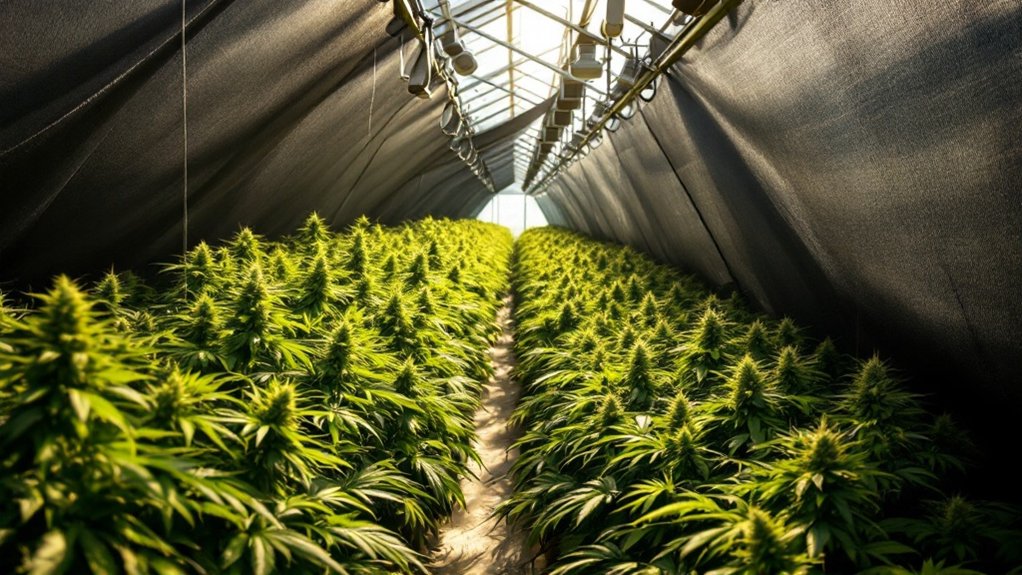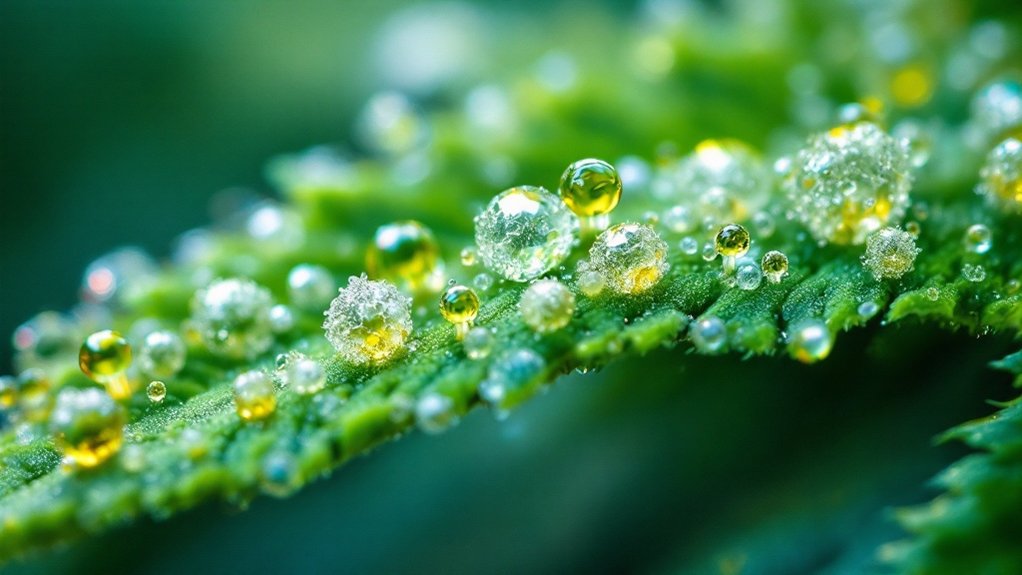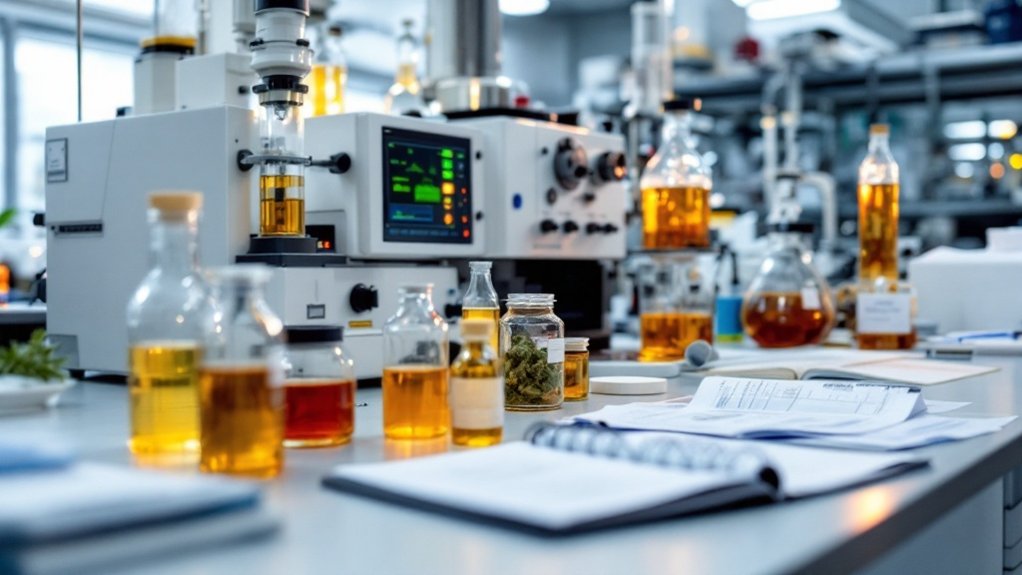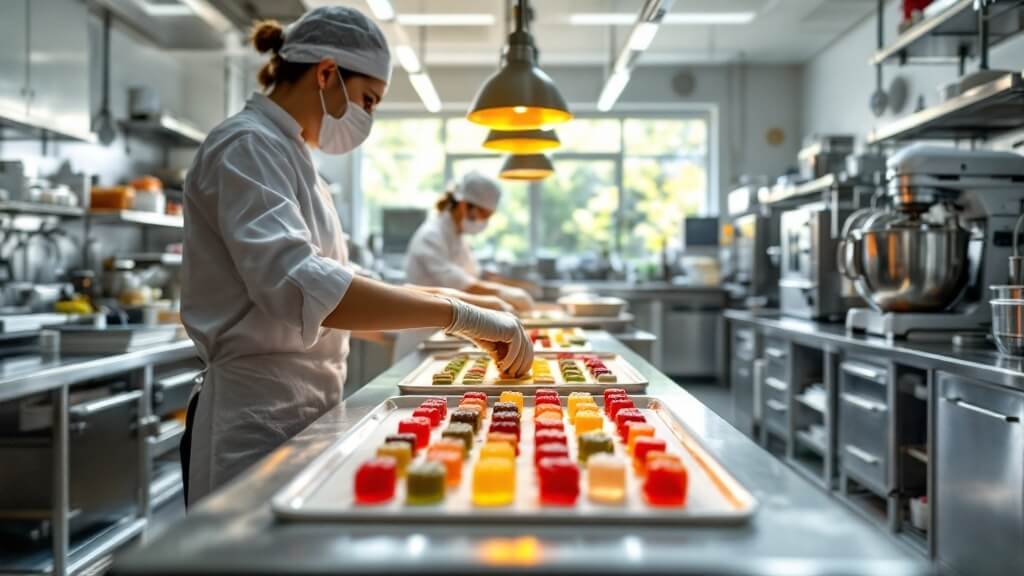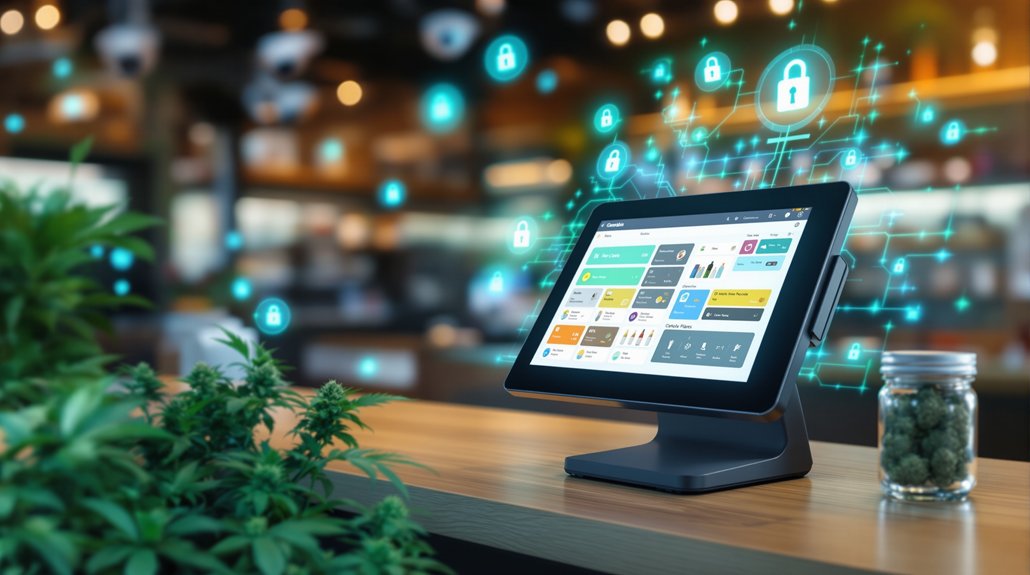Light deprivation cultivation blends outdoor growing benefits with controlled flowering cycles. This technique creates multiple harvest opportunities by manipulating photoperiods through strict 12-hour light/dark schedules. Pros include increased yield efficiency, reduced energy costs compared to indoor operations, and better pest management than traditional outdoor methods. Challenges involve equipment requirements, vigilant light leak prevention, and incompatibility with autoflowering strains. Success requires proper greenhouse structures, light-blocking materials, and consistent timing systems to maximize this hybrid cultivation approach.
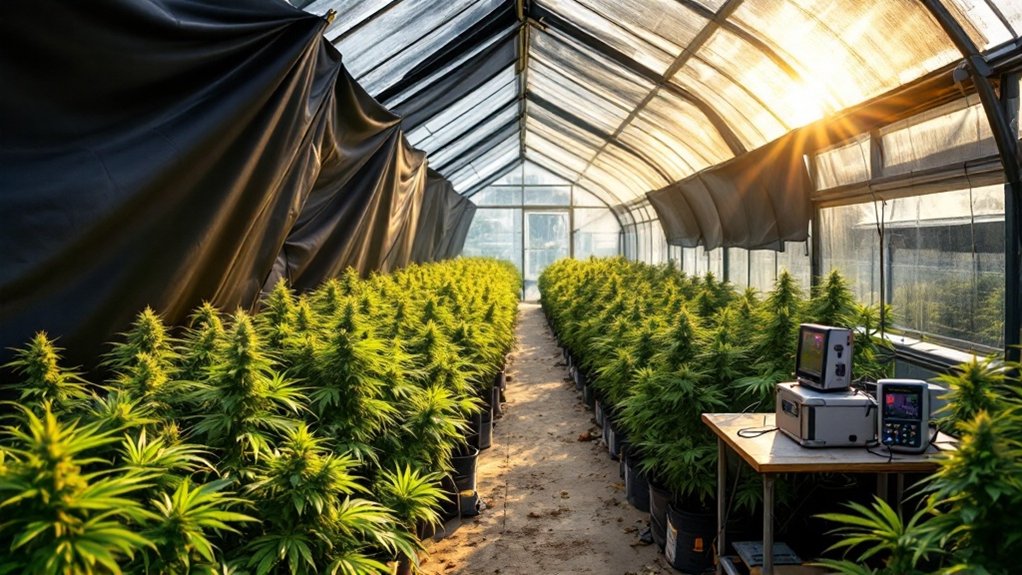
While traditional cannabis cultivation follows natural seasonal light cycles, light deprivation techniques offer growers unprecedented control over the flowering process. Light deprivation, commonly referred to as “light dep,” works by manipulating the light exposure cannabis plants receive, effectively triggering the flowering stage earlier than would naturally occur. This technique involves covering plants to simulate shorter daylight periods, maintaining a strict 12-hour light and 12-hour dark cycle. The methodology combines the benefits of a controlled environment with the power of natural sunlight, making it an increasingly popular approach among cultivators seeking efficiency and quality.
One of the most notable advantages of light dep cultivation is the ability to produce multiple harvests within a single growing season. Traditional outdoor operations typically yield just one annual harvest, whereas light dep can enable two or more cycles, greatly increasing productivity. This technique also creates highly controlled growing conditions that result in consistent, high-quality cannabis while simultaneously reducing exposure to pests and diseases compared to traditional outdoor methods. Additionally, light dep cultivation proves more environmentally sustainable than full indoor operations since it utilizes natural sunlight rather than relying entirely on artificial lighting systems. The method significantly lowers carbon footprint while still achieving results comparable to indoor cultivation. Proper lighting is essential for success, with many growers using supplementary HID or LED systems during periods of insufficient natural light.
Despite its benefits, light dep growing comes with notable challenges. The method demands considerably more work and attentiveness than conventional approaches. Light leaks during the dark period can completely compromise the growing process and potentially ruin an entire harvest. The final product may also appear different compared to cannabis grown using other methods, which some consumers and growers find less desirable. Importantly, light dep is incompatible with auto-flowering cannabis varieties, which flower based on age rather than light exposure.
Successful light dep cultivation requires specific equipment, including a greenhouse structure with proper ventilation, light-blocking tarps or an automated light deprivation system, and timer systems to maintain consistent light schedules. Light meters help monitor and guarantee complete darkness during critical periods. Temperature and humidity control within the greenhouse environment is essential for ideal plant development.
When comparing cultivation methods, light dep occupies a middle ground between fully controlled indoor operations and traditional outdoor growing. It balances the natural benefits of sunlight with the precision of controlled environments, offering growers flexibility in regions with inadequate natural light cycles while maintaining greater sustainability than indoor cultivation through reduced energy consumption.
Frequently Asked Questions
What Equipment Is Essential for Successful Light Deprivation Cannabis Growing?
Successful light deprivation cannabis cultivation requires several essential components.
Blackout tarps or light-proof fabric mounted on a sturdy frame create the necessary dark period, while ventilation systems maintain peak temperature and humidity levels.
Reliable timers guarantee consistent photoperiod control, and supplemental lighting may be necessary during vegetative phases.
Proper growing containers, quality medium, and precision irrigation systems support plant development.
Environmental monitoring tools like thermo-hygrometers help growers maintain perfect conditions throughout the light deprivation schedule.
How Does Light Deprivation Affect THC Levels in Cannabis?
Light deprivation can greatly influence THC levels in cannabis by allowing precise control over flowering timing. By manipulating photoperiods, growers can harvest plants when cannabinoid production peaks rather than when seasons dictate.
This controlled environment reduces plant stress factors that might otherwise diminish THC production. Strategic darkness scheduling before harvest may increase resin production, while consistent light deprivation cycles help maintain reliable potency levels between crops.
Additionally, protection from adverse weather conditions preserves THC integrity that might otherwise degrade.
Can Light Dep Techniques Be Used for Indoor Growing?
Light deprivation techniques can indeed be utilized effectively in indoor cannabis cultivation settings.
Indoor growers can implement light dep methods by using blackout curtains, designated dark rooms, or automated timing systems to guarantee plants receive precisely 12 hours of uninterrupted darkness daily.
This controlled manipulation of the light cycle triggers flowering regardless of season, allowing cultivators to achieve multiple harvests annually while maximizing space efficiency.
The technique requires strict adherence to darkness periods to prevent disruption of the flowering process.
How Much Can Light Deprivation Increase Annual Cannabis Yields?
Light deprivation techniques can greatly increase annual cannabis yields by enabling multiple harvest cycles per year instead of a single seasonal harvest.
Research indicates that increasing planting density from 1 to 2 plants/m² improves yield quantity by 28-44% per area.
The precise control over flowering cycles accelerates crop turnover, allowing growers to fill market gaps when traditionally grown cannabis becomes scarce.
This controlled environment also enhances bud density, size, and overall quality through optimized energy allocation during flowering.
What Common Mistakes Do Beginners Make With Light Dep Growing?
Beginners commonly make several critical mistakes with light deprivation growing.
They often mismanage blackout timing, failing to maintain strict 12/12 light cycles necessary for flowering.
Environmental control errors include inadequate temperature regulation and poor humidity management.
Many novice growers struggle with insufficient light intensity or incorrect spectrum placement.
Overwatering remains pervasive, causing oxygen deprivation to roots.
Material selection issues frequently arise, with growers using inferior covers that allow light leaks, disrupting the carefully controlled photoperiod.
